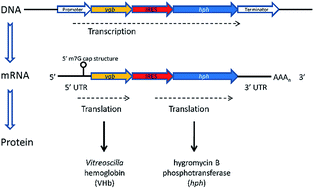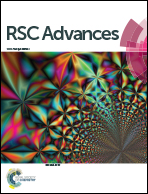Development of a prokaryotic-like polycistronic expression system based on a virus-originated internal ribosome entry site (IRES) in industrial eukaryotic microorganisms†
Abstract
A prokaryotic-like polycistronic expression system was developed in Pichia pastoris and Acremonium chrysogenum. With simplicity and higher effectiveness, this polycistronic expression system is suitable for introducing multiple genes or entire metabolic pathways into industrial eukaryotic microorganisms.


 Please wait while we load your content...
Please wait while we load your content...